Вулкан Эйяфьядлайёкюдль прогремел на весь мир в 2010 году серией впечатляющих извержений. Сейчас он спокоен и безопасен для посещения и является одним из лучших мест в Исландии для пеших походов, снегоходных туров и захватывающих видов на ледник. Используйте этот путеводитель по Эйяфьядлайёкюдль, чтобы спланировать своё путешествие к этой знаковой достопримечательности Южного побережья.
На Южном побережье Исландии возвышается ледниковый вулкан высотой 1666 метров в самой высокой точке. Это Эйяфьядлайёкюдль — потрясающее место для ледниковых походов в Исландии и других приключений.
Почему нам можно доверять
Guide to Iceland — самая надёжная туристическая платформа в Исландии, которой ежегодно пользуются миллионы путешественников. Все наши материалы пишутся и проверяются местными экспертами, отлично знающими Исландию. Мы гарантируем вам точные, актуальные и достоверные советы для путешествий.
Название Эйяфьядлайёкюдль переводится как «ледник гор островов», что связано с расположенным рядом архипелагом Ве́стманнаэ́йяр (Вестманские острова), который также образовался в результате вулканической активности.
Сегодня Эйяфьядлайёкюдль — не только впечатляющий природный объект, но и отличная база для активного отдыха, например, снегоходных туров. Многие путешественники предпочитают арендовать автомобиль в Исландии, чтобы самостоятельно исследовать Южное побережье и легко добраться до этой знаменитой локации.
Не переживайте: вулкан находится под постоянным наблюдением, и в случае опасности доступ к нему закрывают. Читайте дальше, чтобы узнать больше об истории Эйяфьядлайёкюдль и о том, почему он стал популярной туристической достопримечательностью.
Что нужно знать о вулкане Эйяфьядлайёкюдль
-
Известное лицо: Эйяфьядлайёкюдль появлялся в фильме Бена Стиллера «Невероятная жизнь Уолтера Митти» (2013), а также упоминался в сериалах «Мадам госсекретарь» и «Восьмое чувство». О нём даже написано несколько песен.
-
Лучшее время для посещения: Лучше всего приезжать сюда летом — в это время года мягче погода и безопаснее условия для походов. Зимой же здесь особенно интересно тем, кто хочет прокатиться на снегоходе или увидеть ледник в настоящей зимней сказке.
-
Не бойтесь: Эйяфьядлайёкюдль не проявляет активности с августа 2010 года и находится под пристальным контролем геологических институтов.
-
Как добраться: Эйяфьядлайёкюдль расположен прямо у Кольцевой дороги на Южном побережье Исландии, примерно в двух часах езды от Рейкьявика. Сюда легко доехать на машине, а многие экскурсии по Южному побережью включают остановки у ледника или в его визит-центре.
-
Что делать: Гости могут посетить визит-центр Эйяфьядлайёкюдля, отправиться в живописные походы по окрестностям, прокатиться на снегоходе по леднику или съездить к водопадам Сельяландсфосс и Скоугафосс, которые тоже пострадали от извержения 2010 года.
Как огонь и лёд сформировали Эйяфьядлайёкюдль

Эйяфьядлайёкюдль — это стратовулкан, или сложный вулкан, который состоит из чередующихся слоёв, образованных многочисленными извержениями за долгие годы.
Ледяная шапка Эйяфьядлайёкюдля занимает около 66 квадратных километров, что делает его одним из самых небольших ледников Исландии. Ледник покрывает вершину вулкана и питает несколько ледниковых языков, спускающихся по его склонам.
Два основных ледниковых языка Эйяфьядлайёкюдля — Гигйёкюдль (самый крупный) и Steinholtsjokull. Талые воды Гигйёкюдля впадают в реку Маркарфльоут, а Steinholtsjokull — в озеро Steinholtslon.
Именно ледяная шапка сыграла ключевую роль в извержении 2010 года: взаимодействие лавы и льда усилило взрывную силу и выбросы пепла.
История извержений Эйяфьядлайёкюдля
 Вулканическая активность более 200 лет назад повлияла на окрестности ледника и, по сообщениям, привела к гибели скота в регионе. С момента заселения Исландии в 874 году Эйяфьядлайёкюдль извергался в 900, 1612 и с 1821 по 1823 годы.
Вулканическая активность более 200 лет назад повлияла на окрестности ледника и, по сообщениям, привела к гибели скота в регионе. С момента заселения Исландии в 874 году Эйяфьядлайёкюдль извергался в 900, 1612 и с 1821 по 1823 годы.
Извержения 1821–1823 годов сопровождались выбросом большого количества пепла. Считается, что он содержал необычно много фтора, из-за чего погибло много домашних животных. Сейчас Эйяфьядлайёкюдль безопасен, но следы тёмно-серого вулканического пепла XIX века до сих пор можно найти по всему югу Исландии.
Извержения Эйяфьядлайёкюдля в 2010 году
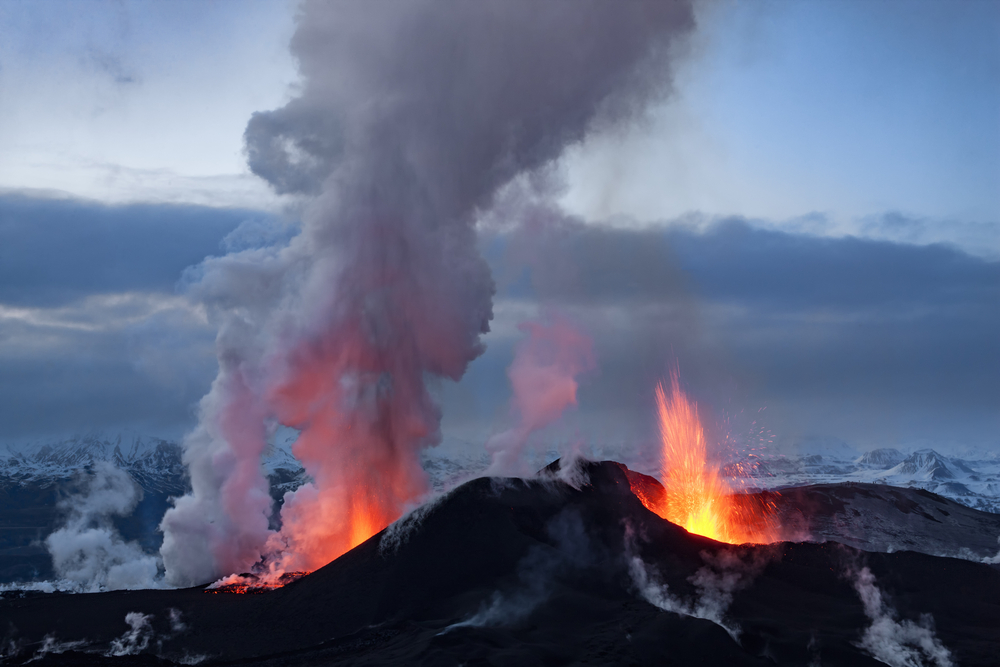 Учёные зафиксировали рост сейсмической активности в конце февраля 2010 года, что указывало на накопление магмы под Эйяфьядлайёкюдлем. В течение следующих недель в этом районе произошло несколько тысяч небольших землетрясений.
Учёные зафиксировали рост сейсмической активности в конце февраля 2010 года, что указывало на накопление магмы под Эйяфьядлайёкюдлем. В течение следующих недель в этом районе произошло несколько тысяч небольших землетрясений.
Март 2010
20 марта 2010 года началось извержение на перевале Фиммвёрдюхаулс между Эйяфьядлайёкюдлем и ледником Мирдальсйёкюдлем. Мирдальсйёкюдль находится в 24 километрах от Эйяфьядлайёкюдля и покрывает Катлу — один из самых активных вулканов Исландии. Это извержение вызвало трещину рядом с популярными туристическими тропами.
Учёные связывают прошлые извержения Эйяфьядлайёкюдля с последующей активностью Катлы, что говорит о геологической связи между их магматическими камерами.
Апрель 2010
14 апреля 2010 года произошло ещё одно извержение. Когда магма вырвалась из центрального кратера Эйяфьядлайёкюдля, талые воды устремились в близлежащие водоёмы. В результате 800 человек были эвакуированы — не из-за лавы, а из-за опасных ледниковых наводнений, которые в прошлом разрушали исландские деревни.
Последствия апрельского извержения ощущались не только под ледником, но и в небе. Авиакомпании приостановили полёты над частями Северо-Западной Европы на несколько дней, так как выброшенный пепел поднялся на такую высоту, что полёты стали небезопасны.
Май 2010
В мае 2010 года очередное извержение вызвало электрические бури и снова нарушило авиасообщение. Этот период активности завершился 23 мая 2010 года, но его последствия ощущались ещё долго.
Пепел, выпавший на большие территории Исландии, изменил состав почвы и потребовал корректировки некоторых сельскохозяйственных практик. Исследования его химического состава и путей переноса расширили понимание экологических процессов.
Спутниковые снимки извержения, сделанные NASA Earth Observatory, до сих пор используются для атмосферных исследований и прогнозирования будущей вулканической активности.
К счастью, в результате извержений 2010 года не было человеческих жертв, а некоторые даже считали закрытие воздушного пространства чрезмерной мерой.
Позже в том же году в Исландии выпустили специальную серию коллекционных марок с настоящим вулканическим пеплом в память о событии.
Можно ли сейчас посетить Эйяфьядлайёкюдль?
 Хотя в 2010 году о нём говорили во всём мире, с тех пор Эйяфьядлайёкюдль спокоен, и вероятность повторения подобных событий в ближайшее время крайне мала. С августа 2010 года вулкан считается спящим.
Хотя в 2010 году о нём говорили во всём мире, с тех пор Эйяфьядлайёкюдль спокоен, и вероятность повторения подобных событий в ближайшее время крайне мала. С августа 2010 года вулкан считается спящим.
Такие организации, как Исландское метеорологическое управление, следят за сейсмической активностью по всей стране и своевременно предупреждают о возможной опасности. Кроме того, вокруг ледника Эйяфьядлайёкюдль установлены инфракрасные датчики для постоянного мониторинга.
Как добраться до Эйяфьядлайёкюдля
 Проще всего доехать до Эйяфьядлайёкюдля по Кольцевой дороге (трасса 1) вдоль Южного побережья Исландии. Ледниковый вулкан находится примерно в 125 километрах от Рейкьявика, и дорога на машине займёт менее двух часов. Для более близкого знакомства сверните на трассу 249 у Хвольсвёдлюра или отправляйтесь в визит-центр Эйяфьядлайёкюдля, чтобы узнать больше об извержении 2010 года.
Проще всего доехать до Эйяфьядлайёкюдля по Кольцевой дороге (трасса 1) вдоль Южного побережья Исландии. Ледниковый вулкан находится примерно в 125 километрах от Рейкьявика, и дорога на машине займёт менее двух часов. Для более близкого знакомства сверните на трассу 249 у Хвольсвёдлюра или отправляйтесь в визит-центр Эйяфьядлайёкюдля, чтобы узнать больше об извержении 2010 года.
На сам ледник на машине заехать нельзя, но из близлежащих городков, таких как Хвольсвёдлюр и Скоугар, организуются туры на суперджипах и ледниковые походы.
Лучшие самостоятельные туры с посещением Эйяфьядлайёкюдля
 Если вы арендуете автомобиль, эти самостоятельные туры позволят легко включить Эйяфьядлайёкюдль в свой маршрут. По пути вы также увидите водопады, чёрные пляжи и другие жемчужины Южного побережья.
Если вы арендуете автомобиль, эти самостоятельные туры позволят легко включить Эйяфьядлайёкюдль в свой маршрут. По пути вы также увидите водопады, чёрные пляжи и другие жемчужины Южного побережья.
-
7-дневный самостоятельный тур по северному сиянию: отправляйтесь в путешествие по Южному побережью, Золотому кольцу и полуострову Снайфедльснес с подробным маршрутом к ледяным пещерам, ледникам, чёрным пляжам и северному сиянию.
-
Неделя самостоятельных путешествий по северному сиянию: исследуйте Золотое кольцо, Южное побережье, Снайфедльснес, Рейкьявик и другие места — с посещением ледниковой лагуны Йёкюльсаурлоун и ледяных пещер Ватнайёкюдля.
-
6-дневный самостоятельный тур по Исландии: откройте для себя главные природные чудеса страны — Голубую лагуну, Рейкьявик, Золотое кольцо, Южное побережье и ледниковую лагуну Йёкюльсаурлоун.
-
6-дневный самостоятельный тур по Южному побережью: исследуйте Голубую лагуну, Рейкьявик, Золотое кольцо, Южное побережье и ледниковую лагуну Йёкюльсаурлоун с гибкими маршрутами, подобранными отелями и бесконечным светом полярного дня.
Многодневные туры с посещением Эйяфьядлайёкюдля
 Если вы хотите исследовать Южное побережье без самостоятельного вождения, эти многодневные экскурсии с гидом включают время у Эйяфьядлайёкюдля и других ключевых достопримечательностей вдоль Кольцевой дороги.
Если вы хотите исследовать Южное побережье без самостоятельного вождения, эти многодневные экскурсии с гидом включают время у Эйяфьядлайёкюдля и других ключевых достопримечательностей вдоль Кольцевой дороги.
-
3-дневный тур по северному сиянию и ледяным пещерам: познакомьтесь с зимними чудесами Исландии на Золотом кольце и Южном побережье — водопады, ледники, чёрные пляжи и волшебная ледяная пещера во Ватнайёкюдле.
-
2-дневный летний тур с гидом: откройте для себя летнюю магию Исландии — водопады, ледники, чёрные пляжи и лагуну Йёкюльсаурлоун, путешествуя на комфортабельном микроавтобусе с опытным гидом и возможностью прокатиться на лодке среди айсбергов.
-
3-дневный тур по Золотому кольцу и Южному побережью: посетите ледяную пещеру, пройдите по леднику и откройте для себя самые знаковые природные чудеса Исландии — незабываемое приключение по отличной цене.
Лучшие развлечения рядом с Эйяфьядлайёкюдлем
Окрестности Эйяфьядлайёкюдля — одни из самых живописных и насыщенных приключениями регионов Исландии. Любите ли вы активный отдых или просто наслаждаетесь природой, здесь вас ждёт множество незабываемых впечатлений и достопримечательностей.
Посетите водопад Скоугафосс
 Всего в нескольких минутах езды от вулкана находится водопад Скоугафосс — один из самых известных в Исландии. Его воды падают с высоты 60 метров, а в брызгах часто появляются радуги.
Всего в нескольких минутах езды от вулкана находится водопад Скоугафосс — один из самых известных в Исландии. Его воды падают с высоты 60 метров, а в брызгах часто появляются радуги.
Лестница наверх открывает панорамные виды на побережье и горы. Здесь же начинается тропа Фиммвёрдюхаулс, ведущая между ледниками Эйяфьядлайёкюдль и Мирдальсйёкюдль.
Посмотрите на водопад Сельяландсфосс
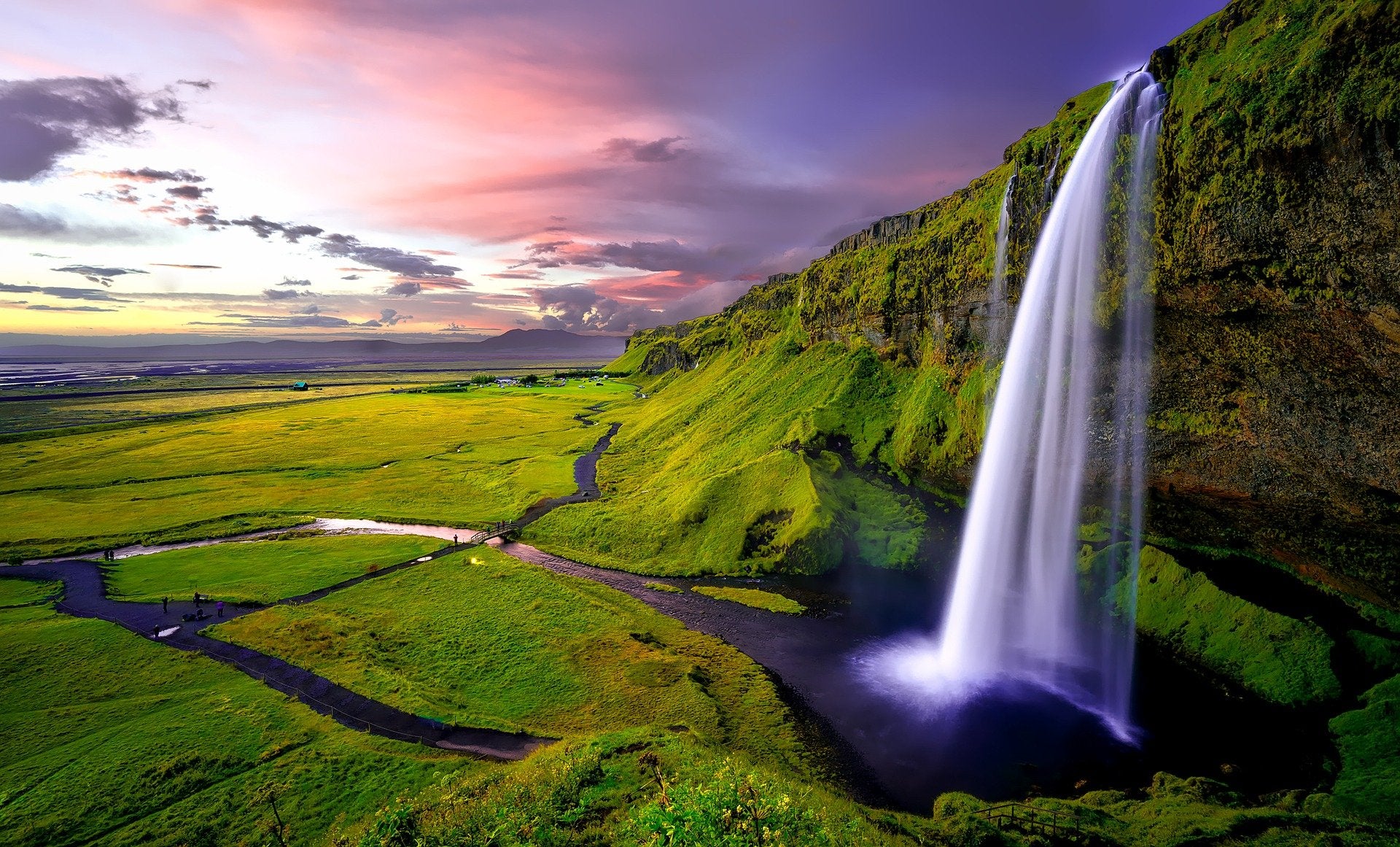 Ещё одна жемчужина рядом — водопад Сельяландсфосс, знаменитый тропой, по которой можно пройти за стену воды и увидеть водопад с необычного ракурса. Особенно красиво здесь в лучах заката — это обязательная остановка для фото на Кольцевой дороге.
Ещё одна жемчужина рядом — водопад Сельяландсфосс, знаменитый тропой, по которой можно пройти за стену воды и увидеть водопад с необычного ракурса. Особенно красиво здесь в лучах заката — это обязательная остановка для фото на Кольцевой дороге.
Отправьтесь в ледниковый поход
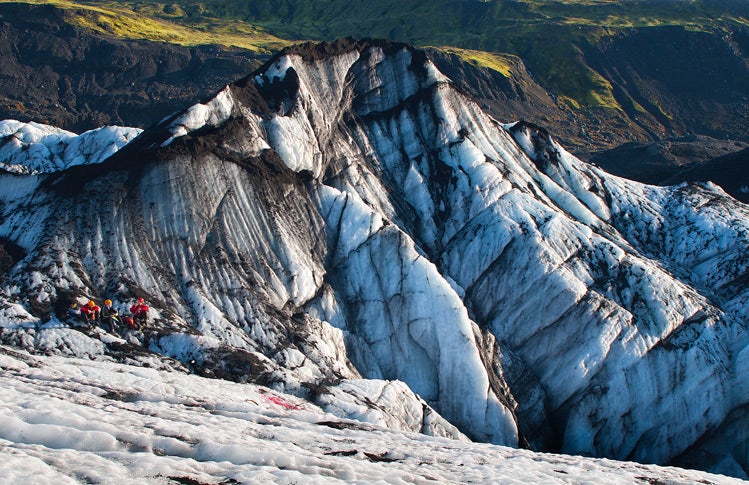
Попробуйте снегоходные приключения
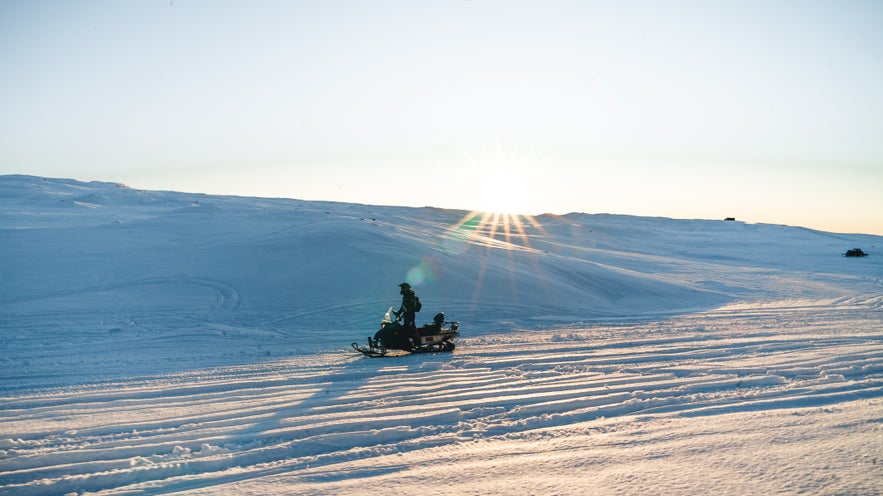 Любителям адреналина понравятся туры на снегоходах по Эйяфьядлайёкюдлю или Мирдальсйёкюдлю. Промчитесь по снежным просторам с захватывающими видами на горы и вулканы.
Любителям адреналина понравятся туры на снегоходах по Эйяфьядлайёкюдлю или Мирдальсйёкюдлю. Промчитесь по снежным просторам с захватывающими видами на горы и вулканы.
Покатайтесь верхом на исландских лошадях
 Исследуйте окрестности верхом на исландской лошади — уникальной и доброй породе с мягкой походкой тельт. Местные конные базы рядом с Эйяфьядлайёкюдлем предлагают конные туры по чёрным пескам, лавовым полям и зелёным лугам — это спокойный способ прочувствовать местный ландшафт.
Исследуйте окрестности верхом на исландской лошади — уникальной и доброй породе с мягкой походкой тельт. Местные конные базы рядом с Эйяфьядлайёкюдлем предлагают конные туры по чёрным пескам, лавовым полям и зелёным лугам — это спокойный способ прочувствовать местный ландшафт.
Однодневные туры к леднику Эйяфьядлайёкюдль
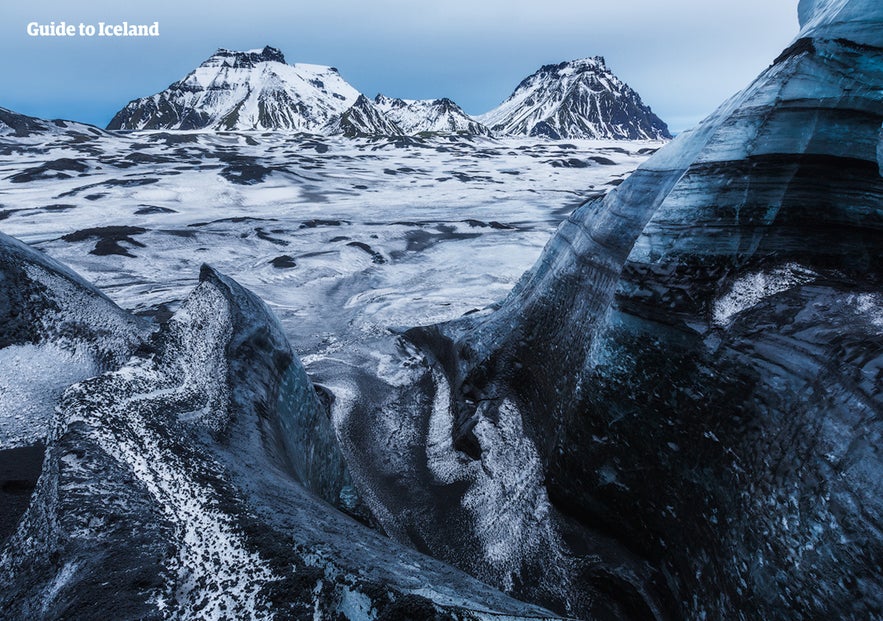
-
Снегоходный тур по Эйяфьядлайёкюдлю: промчитесь по ледяной шапке на снегоходе с опытным гидом.
-
Конный тур по лугам Скейдведлир: полюбуйтесь видами на Эйяфьядлайёкюдль, катаясь на исландской лошади по лугам Южной Исландии.
-
Поход на ледник Эйяфьятлайокудль: опытным туристам стоит выбрать этот 8-часовой поход с ледниковым снаряжением и возможностью отдохнуть в бассейне после маршрута.
Часто задаваемые вопросы о леднике Эйяфьядлайёкюдль
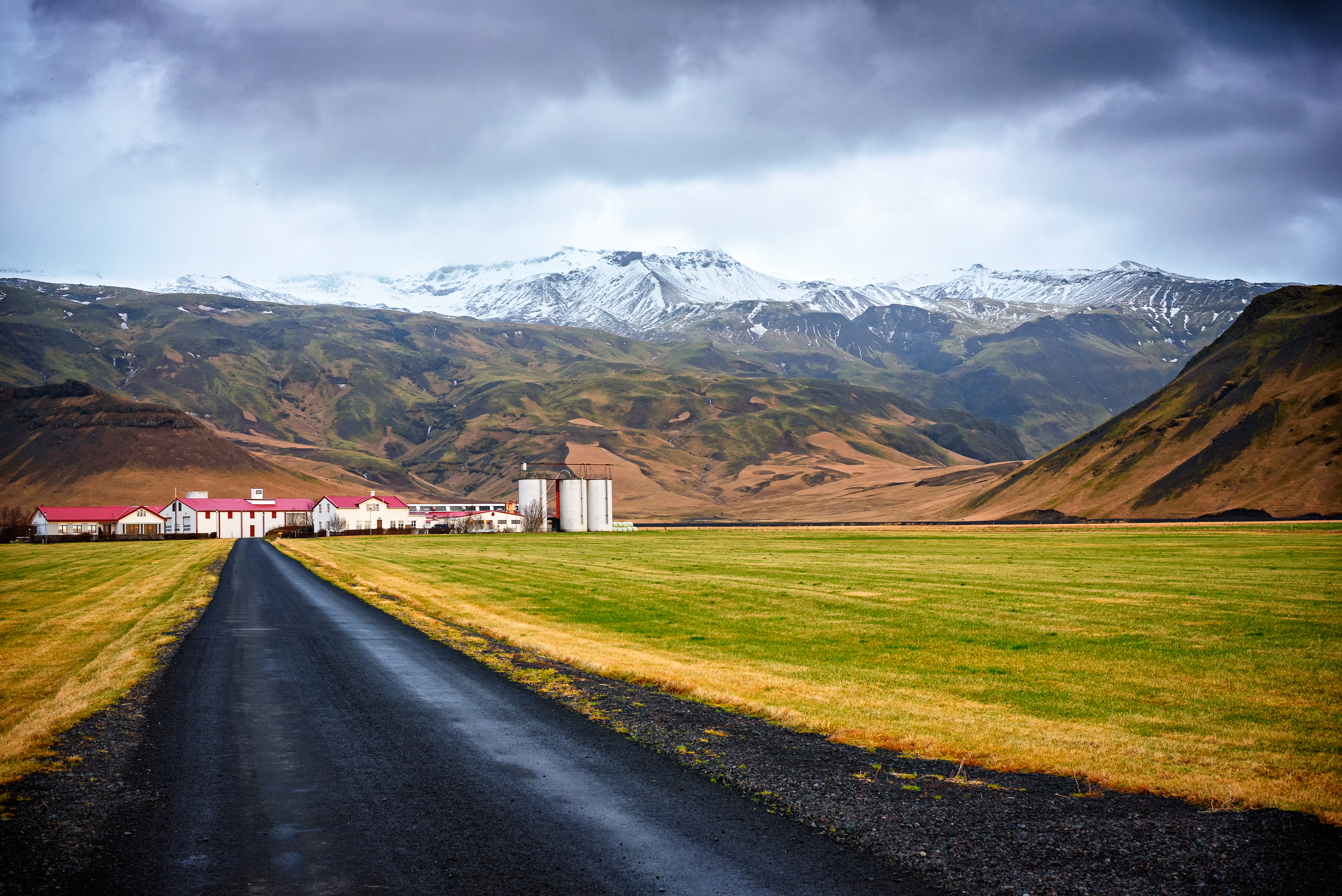 Узнайте больше об этом знаменитом леднике с помощью часто задаваемых вопросов.
Узнайте больше об этом знаменитом леднике с помощью часто задаваемых вопросов.
Можно ли подняться на вершину Эйяфьядлайёкюдль пешком?
Да, восхождение возможно, но это сложный и требующий хорошей физической подготовки маршрут. Мы рекомендуем отправляться только с опытным гидом.
Как далеко Эйяфьядлайёкюдль от Рейкьявика?
Эйяфьядлайёкюдль находится примерно в 120 километрах от Рейкьявика.
Можно ли посетить визит-центр Эйяфьядлайёкюдль?
Да, визит-центр Эйяфьядлайёкюдль открыт для всех, кто хочет узнать больше об извержении 2010 года. Он расположен недалеко от Хвольсвёдлюра и предлагает экспозиции о вулканах, рассказы местных жителей и информацию о влиянии извержения на окружающую среду.
Безопасно ли путешествовать по региону Эйяфьядлайёкюдль на арендованной машине?
Да, обычно путешествовать по этому региону на автомобиле безопасно, однако стоит учитывать погодные условия, особенно зимой. Дороги могут быть скользкими или грязными, поэтому для некоторых маршрутов рекомендуется полноприводная машина.
Откройте для себя огненное наследие Эйяфьядлайёкюдля
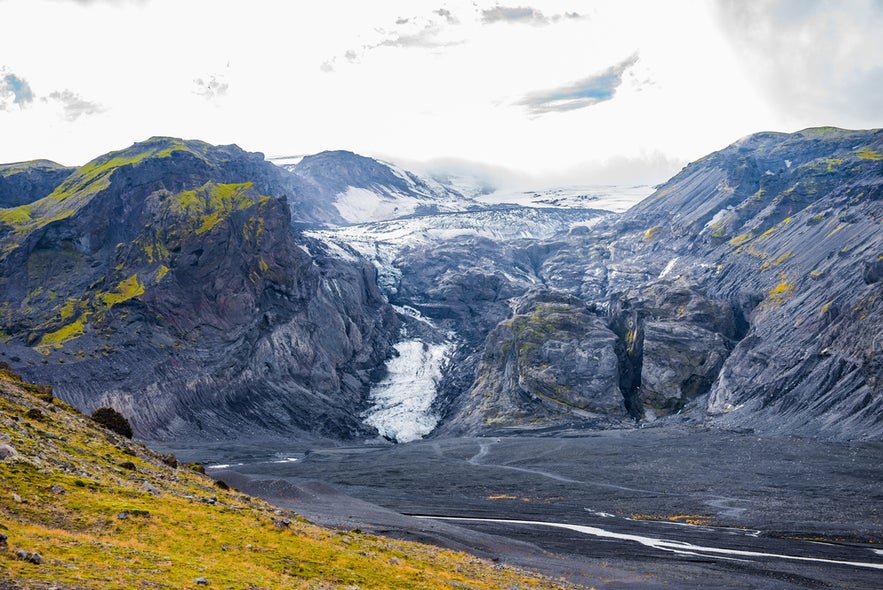 Извержения Эйяфьядлайёкюдля изменили облик и состав Исландии и повлияли на методы изучения и мониторинга вулканов. Наслаждайтесь величественными пейзажами во время визита, а также узнайте больше об истории страны. Это отличное место для любителей приключений и активного отдыха: ледник идеально подходит для походов, снегоходных туров и других активностей.
Извержения Эйяфьядлайёкюдля изменили облик и состав Исландии и повлияли на методы изучения и мониторинга вулканов. Наслаждайтесь величественными пейзажами во время визита, а также узнайте больше об истории страны. Это отличное место для любителей приключений и активного отдыха: ледник идеально подходит для походов, снегоходных туров и других активностей.
Забронируйте тур уже сегодня, чтобы увидеть всемирно известное чудо Эйяфьядлайёкюдля, или откройте для себя другие жемчужины Южного побережья Исландии.









